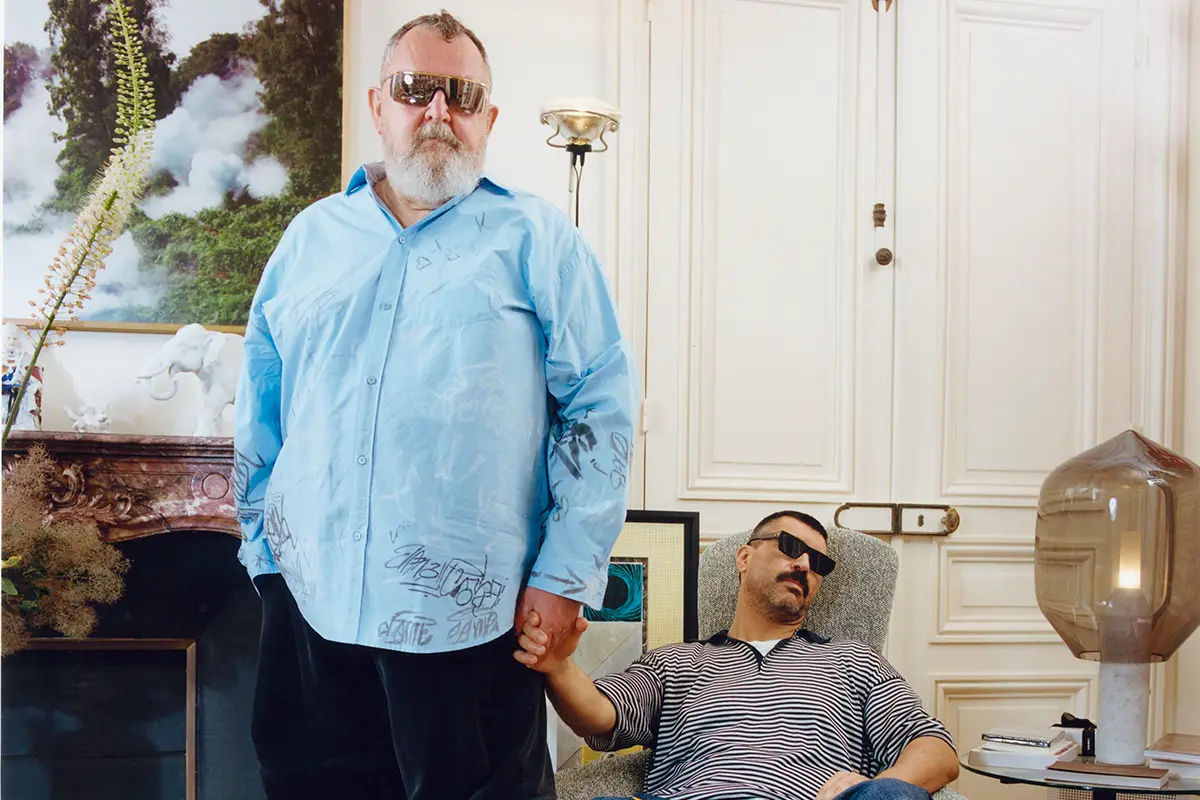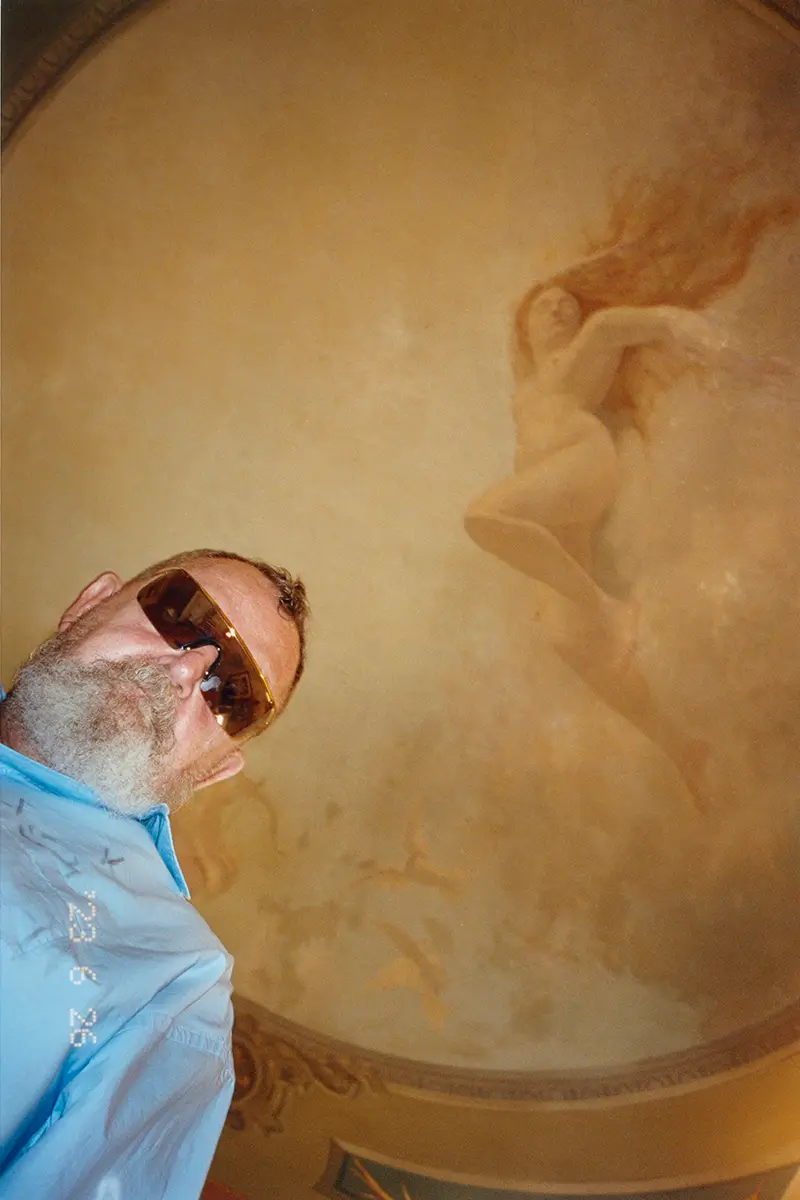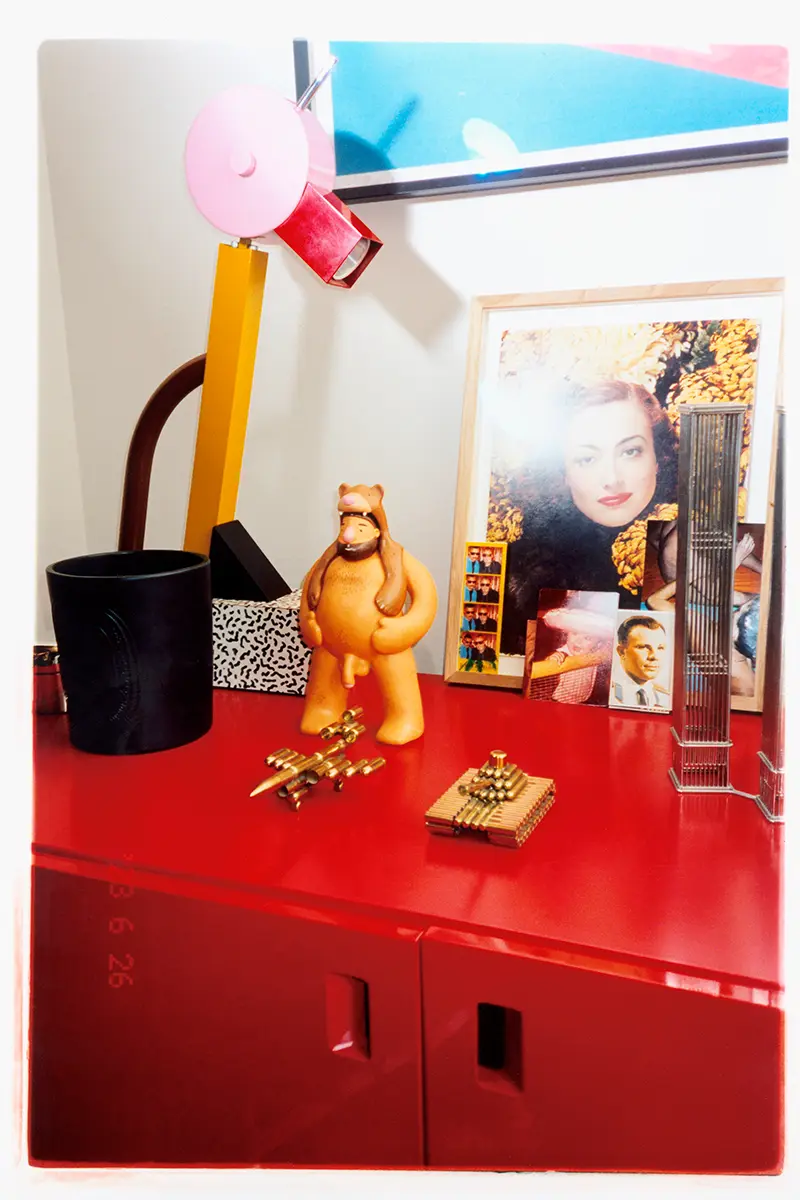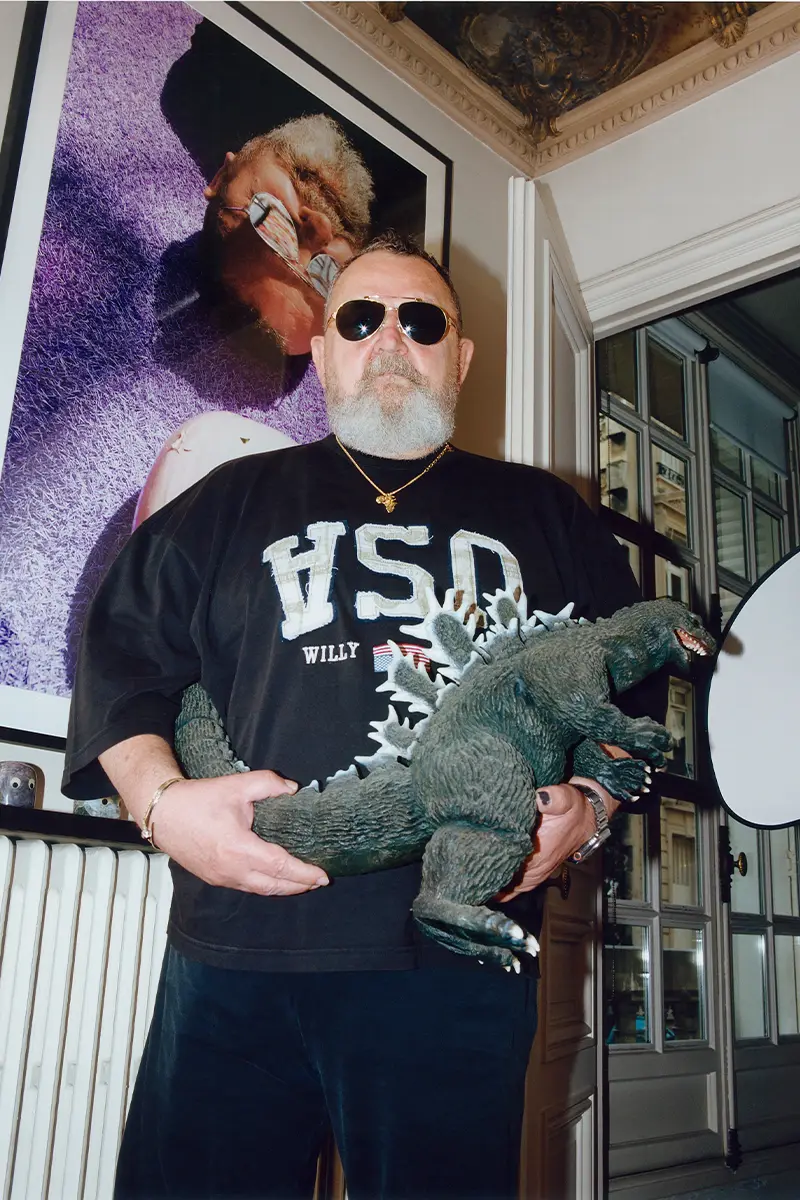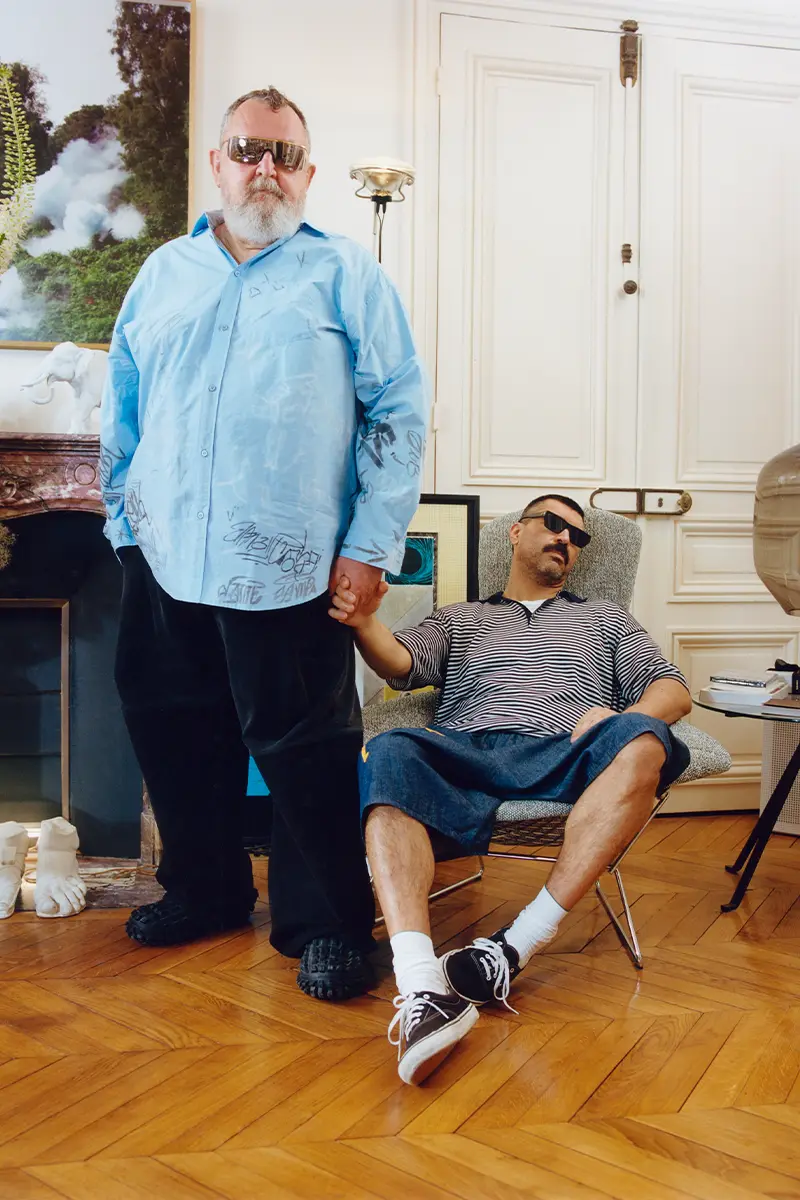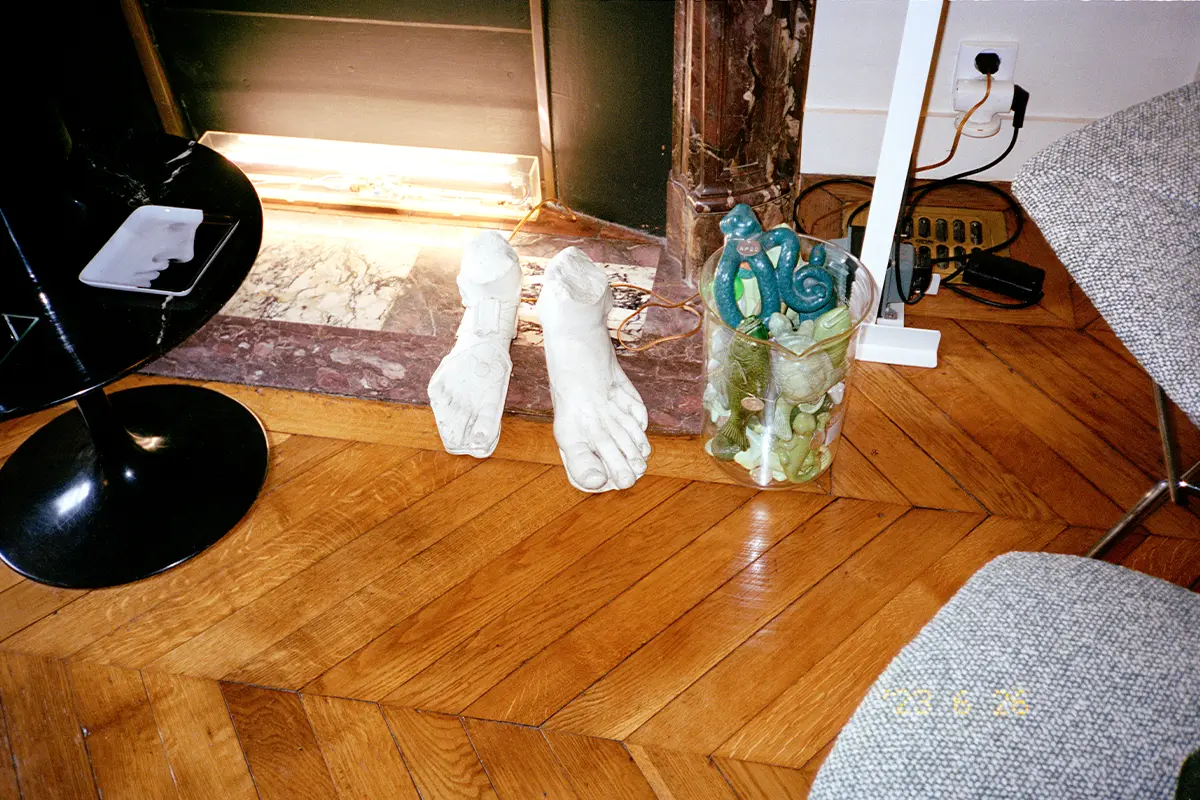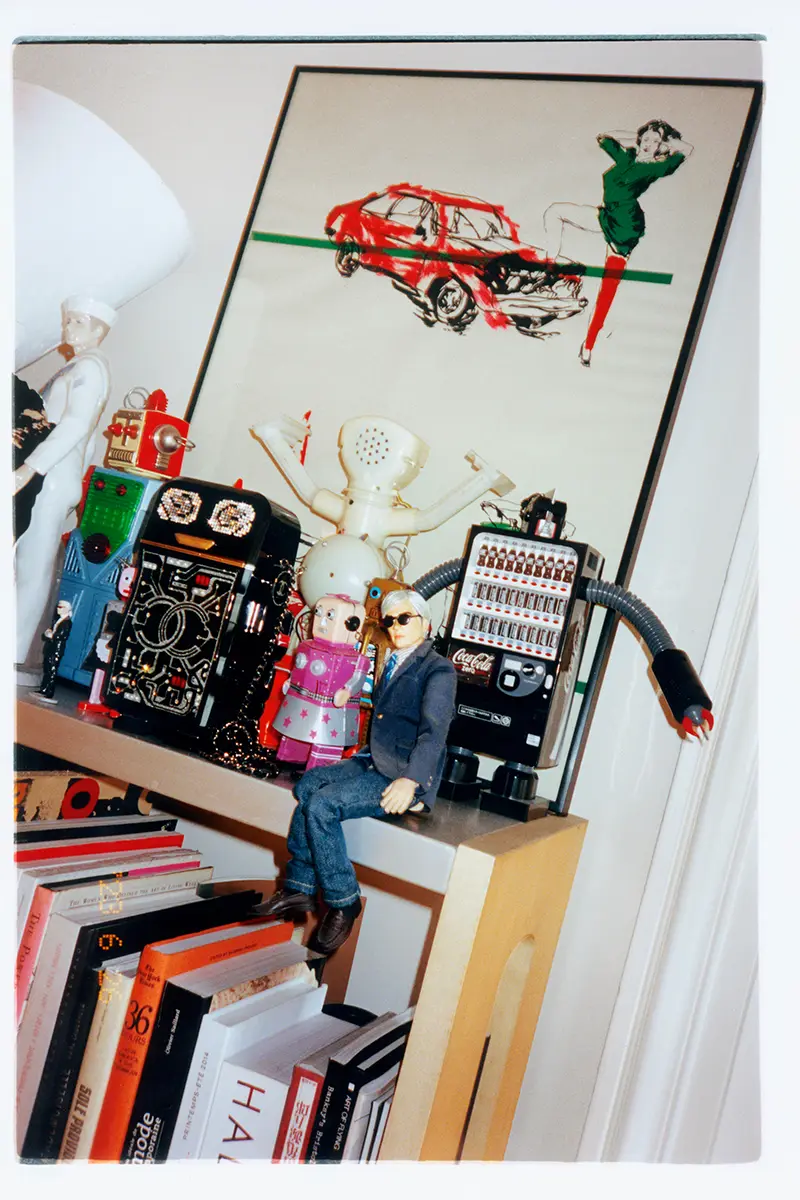Can fashion soundtracks carry political messages? «Fashion does fashion» Michel Gaubert, an interview for Lampoon, The Working Issue: never taking irony for granted
Fashioning music: about the politics and styling of music. An interview with Michel Gaubert
The first spaceship to escape the fashion world was a Chanel, concluding the Fall 2017 fashion show at the Grand Palais, pulling off the grand finale of a Karl Lagerfeld signature spectacle. In the background, the tune of Elton John and the melody played by the musicians from the Lamoureux orchestra. That wasn’t the first nor last time fashion reflected on space and discarding Earth, but it was undoubtedly the most remembered for its cinematographic value, its overlapping media, and for the grandness of it all.
Michel Gaubert, who sound directed and conducted the orchestra for the catwalk is well adjusted to such memorable performances, marking the sound of fashion history. Because if it was to study garments through the lens of music, he would write the handbook. Collaborating with Fendi, Dior, Sacai, or Balmain to convey a mood, Michel Gaubert is the playlist designer behind cruise and couture shows as much as a long-lasting resident at the Fashion Week venues. In a conversation about technology, innovation, and archives, he addresses music as a human choice.
«My mind became like a computer» he explains, «and I have drawers so when I need them, I pull them up and that’s how my memory works». Mr. Gaubert adds gesturing little cassettes over his head, a place where there’s a song for everything. «When you meet a person, do you ever find yourself thinking of what they would sound like? And you have a song in mind»? I can’t help but ask. «I’m like the human Spotify» he answers laughing.
There’s this underlying psychological layer to his practice. As a sound designer, he knows what melody to use to dress up anybody. But then he also pays attention to what music says about individuals, why they like something, and where it comes from. «I’m kind of a psychotherapist. I can bargain with people because when you get close and when you talk to me about music taste, I can begin almost psycho-analyzing. When someone tells me what they feel like, what their mood is, I have to dig into what they’re telling me to find out what it is they’re into. I love that».
Music is an image, music is politics. When sound becomes performative
Since childhood, Michel Gaubert knew music was his calling, something of an omnipresent passion. He started up as a record seller in the Champs Disques shop in Paris, where he would source and curate the independent’s store collection. In 1978 he started playing at the famous Parisian nightclub The Palace and became more involved in the fashion scene. Performance was always a part of what drew Mr. Gaubert to artists and their songs.
He talks about The Rolling Stones’ Jumpin Jack Flash, Guns n Roses’ Sympathy for the Devil, Elton John and Blondie, and of course, David Bowie. «David Bowie, to me, was the man who opened the doors to being in love with music». The passion sprouts from dynamic attitudes and timeless shows when the music starts to have a cinematographic feel, as well as embracing that sense of community that fashion shares too. «These people embraced fashion, the performance act, that’s part of being themselves, representing themselves’ ‘.
Michel Gaubert: the music stylist
To create a tribe, you need a strong personality and knowledge, two of the key characteristics Michel Gaubert emanates mixed with a match made in heaven irony and a sense of nuanced playfulness. Romantic, decisive, defying, introspective, some of the tunes release the most unexpected feelings. It’s never about creating a clickbait sound to go with the fashion collection, it is about digging deeper into what a story has to offer or directing the gaze on corners no one thought of investigating.
An example is the Chanel Los Angeles Cruise. Michel Gaubert explains how in this instance, he «sampled a much darker L.A., noir visuals, phonic elements referencing movies mixed with Miss Kittin tunes. It was more somber because, to me, L.A. is shiny and glittery, but inside it is dark. So I wanted to create that feeling, and it worked». It was never about following the narrative of the show, it’s about twisting it – something of the allure of luxury comes from affording to say something else. Much of the work Gaubert undergoes is curatorial, it’s a way of styling through sound and tracks coming from his archives. «It’s a very personal process. Every day either for pleasure or work, my ears are open constantly, listening to the radio or reading music».
Michel Gaubert and the politics of music
To discuss the politics of music, we need to consider its absence. One of the biggest impact technology holds over entertainment is through movies, where the introduction of sound has revolutionized the industry and its tales. In Indian culture, it created a million-dollar machine with music as its centerpiece. Dialogs, musicals, action, it all became possible through sound, and Michel Gaubert makes a point out of its relevance with his tracks. «Un amor incondicional, un amor tranquillo, un amor estruendosso, un amor profondo».
The Dior in Mexico cruise opens with a monologue about love borrowed from the soundtrack inspired by the movie Roma. «Thank you so much for taking the time to tell me this /This is a real eye-opener/ And maybe I should ditch the blonde wig», the lyrics from the Monte Carlo Chanel Cruise play on. The French producer and DJ often uses narration and music to embed the story that unravels alongside the garments.
It becomes as cinematographic as it can be, and referencing movies or videos is part of the research methodology when attempting to underline an emotion or sensation. «I say music is an image. You can appreciate music for what it is, but it also makes you travel. It gives you sorrow, gives you joy, gives you happiness».
Playing Waldo with inspiration and Instagram. The artificial intelligence era and the style of music
With a fast scroll over his Instagram page, which gathers over three hundred thousand followers, there are many caricatures referencing pop culture, dressing up muses, playing with queer hints, all in a charismatic mash-up of funny twists. The Pope is dancing at Eurovision, Timothe Chalamet wears a Chanel swimsuit with pearl collars, and the King Charles coronation is haunted by Jared Lettos’s Choupette MET appearance.
Every mismatch can look perfectly connected, something that translates into the music tracks as well. To dive into Miche Gaubert’s world is to dive into his archives and collections, where now he stores everything digitally and artificially. He buys almost everything online, remaining somewhat nostalgic over the CD and Vynil era.
«I’m not saying it was better before. It’s a different way to look at it. I like to have this physicality, but it’s more of a social and sentimental aspect. Now it’s mostly hard drives and computers, but visually they don’t do anything». There was also something undoubtedly informational about purchasing CDs or Vinyls, where alongside the item itself, one could gain access to the complete album structure, learning about the image shooting and photographer, the stylist, and the producer, alongside when and where it was recorded. It was like opening the door to a whole dimension surrounding the music. «Now you have to go online and just do the research yourself».
Michel Gaubert: I think people will trust the music designer
It might sound overwhelming to curate such a wide arena of music information, but his working process is about being logical «I’m not following anyone else’s logic, and I think I can make it sound coherent». He explains how «It becomes a jigsaw or Rubik’s Cube I need to solve with everything I gather».
Starting with designated storage filled with around twenty-five sound pieces, he goes on removing until the final selection, editing the choice meticulously. «Do you ever have to compromise»? I wonder since creatives are always testing limits. «I think people will trust the music designer». That exchange of vision is palpable through shows, where Mr. Gaubert always requests images for inspiration.
«I like to create a story, or sometimes the brand owner has a story to tell me. I also need images, I like to know where it is, see the location, even the clothes, but it’s more the attitude I want to create with the clothes, the value». Garments come second, but they always match the musical vibe. «Sometimes what I have to do reminds me of a film. I will do video clips and music and what I thought of until I saw something similar, and put music on top». Even if it sounds slightly abstract, the French producer’s process surrounds images, visuals, movements, characters, and plots, effortlessly creating a spectacle.
When you do music, it is cultural – Michel Gaubert, the stylist of music
Both fashion and music are cultural phenomena capable of gathering people from different backgrounds in the same room. A cultural exchange, an identity flow. «Is there room for innovation»? Michel Gaubert, the stylist of music, thinks there could always be a new approach to sound, and he curiously follows the emerging trends or subcultures, giving attention to each corner of the music field.
It’s a constant movement, probably that’s why he feels more attached to cruise shows where traveling is involved, being able to experience different sites for the musical composition. «I would say the shows that I remember the most are the ones we did in unusual locations because it’s associated with a trip, and they are outside Fashion Week, which is a moment when there are so many shows happening at the same time, and I’m so prepared for hyperactivity that I have my sensors on different sides». The Dior show held in India for the Fall 23 collection mirrored Mr. Gaubert’s versatility and power of suggestion, approaching tradition in a modern and appealing way.
Michel Gaubert: creating, styling sounds and the role of artificial intelligence
«I also collaborate with people, the French producer explains, When I went to India with Dior, Maria Grazia Chiuri wanted to have Indian players, and I agreed, but then I thought about it, and I decided I wanted to have the live music with players that would also be European because it should be a conversation between East and West. Because that’s what Maria Grazia Chiuri was doing in a way, proposing the West wardrobe embellished with colors and embroideries made in India. That’s why I thought with the music we should create the same dialogue. And it was created from scratch». The catwalk held in Mumbai attempted to bridge the two cultures, emphasizing the artistry and embroidery mastery that has soo long been preserved by Chanakya’s Atelier founders.
For the live orchestra, the show involved the composition and conduction of Oliver Coates alongside the musicians of the Symphony Orchestra of India. To play tablas and multi percussions, Dior invited Anuradha Pal, recognized as the first professional female tabla player in the world by Encyclopedia Britannica and the Limca Book of Records. «When you do music, it is very cultural. You should limit yourself to what you know. to go above your boundaries and keep an open mind and see what you can come up with».
Culture had much to do with Michel Gaubert’s passion for music, attesting to how his first summer in the United States deeply shifted his style. «When I was young, I was more into listening to what the other kids did at school». He surely wasn’t experimenting as much as now, and when he discovered other styles such as Country Music, RnB or Soul Music, «I went to America for a whole year, and it opened my ears and my eyes because I was listening to things I wasn’t accustomed to in Europe. That experience gave me a broader scope».
Without technology, we aren’t silent – music and the artificial Intelligence
If technology is the first tool to have brought sound to our lives, in Gaubert’s perspective it is human nature that does the composition «I believe in the human factor because when you hear the same song by five or six different people, and even when all went very well, there’s going to be one or two that are better, because people sing it or play the arrangement – there’s nothing artificial about it».
«I can press play and it’s gonna play for eight years». We talk about his archive and how it took a turn after the iPods and digital downloads. It seems everything has to do with time, and if fashion continuously increases its production speed, so do music and playlists. «Now, loading the tracks into the project would take one minute. I can send playlists with Spotify, so people don’t have to download the files, the sound director explains, There was no need to burn CDs anymore to move on the computer. In the 90s I would play twenty-five tracks on the computer for a show. I would have to get the CDs, put them inside the computer, and then back the song.
Michel Gaubert – artificial intelligence can predict the future
With arts being the playground field for innovation and tool implementation, we consider artificial intelligence. What does the future of producers look like when it comes to ChatGBT or other platforms that can already create a sound? If there are artists that can compose a tune that sounds exactly as requested by just delegating the work to a system, how is creativity endangered? Some use it to bring iconic voices back to life or recreate the style of mashed-up artists. «If you spend just an hour, you can make a song. If you know what to feed the machine». Michel Gaubert is skeptical, he reflects upon it for a bit, unsure of how anything like artificial intelligence can predict the future of his field. «Technology in a sense, has helped a lot musically. Then, artificial intelligence, I’m not there yet. I don’t find myself using artificial intelligence for the time being».
AI and the digital intelligence
Patterns, algorithms, and technical features, producers already consume new tools to achieve great tracks, but there’s something intrinsically human when it comes to giving a mood, a personality to a composition. «AI can make lyrics sound like John Lennon, but I tend to be careful when it comes to it because in virtual reality, we’re overusing it and over-advertising it. At this moment it became embarrassing, because people overdo it, like with auto tunes. There’s so much coming out because it’s easy to make a record. But it cannot be great because the machine can do it itself. I’ll wait to see the artificial intelligence effect, but you will be able to tell what was done by AI. We will be able to split the difference, I’m sure».
Then, there’s the inspirational and voyeuristic aspect to music that absorbs from environments, social and cultural phenomenons as well as making room for reflection. In fashion, it can become a subtle or impactful way to convey societal messages. To showcase solidarity with the war in Ukraine, Armani went silent for their catwalk, while Balenciaga channeled meaningful pieces of poetry read in Ukrainian. «I think Balenciaga does that sometimes. They reflect on what’s going around us, and I think the show they did in the snow when there was the start of the war in Ukraine». The fact Demna used an adaptation by Antonin Dvorak, the Czech composer, was another act of solidarity through music.
Music, fashion and politics according to Michel Gaubert
Politics and fashion don’t go hand in hand, and Mr. Gaubert questions his place in propagating powerful messages when it comes to fashion shows. «I also have to be careful because I’m not working for myself, I’m working for other people he explains, adding I don’t know if everybody would be okay to acknowledge the war or any other things that happened in the world within that fashion show. I don’t know if brands want to be so, I wouldn’t say political, but so engaged and there’s a big debate».
The politics of fashion, the politics of music – Fashion is also an escape and purchase
For a sound director, there’s also the impossibility of timing when these impactful events arise. As Michel Gaubert explains, there’s rarely any space to modify a show less than a week beforehand. «Fashion to some people can be superficial», he reflects, then explaining how eventually, it is a huge business industry based on acquisition, but also a space for culture and storytelling. «Fashion is also an escape and purchase. Politically I’m outraged, all aware of what happened, but I don’t think people want to feel that across the shows. I mean, fashion does fashion, so I don’t know if anybody wants to acknowledge this kind of issue or reflect upon it».
Michel Gaubert, the stylist of music shot by Noel Quintela
Michel Gaubert is fashion’s leading sound director. Along with producing the fashion show soundtracks for an extensive list of clients including Christian Dior, Valentino, Loewe, Fendi, J.W. Anderson, Proenza Schouler and Sacai, the omnipresent sound director boasted a collaboration with Karl Lagerfeld spanning nearly thirty years, until Lagerfeld’s passing in February 2019. Gaubert is also well-known for his mix-tape compilations for Parisian concept store Colette.


